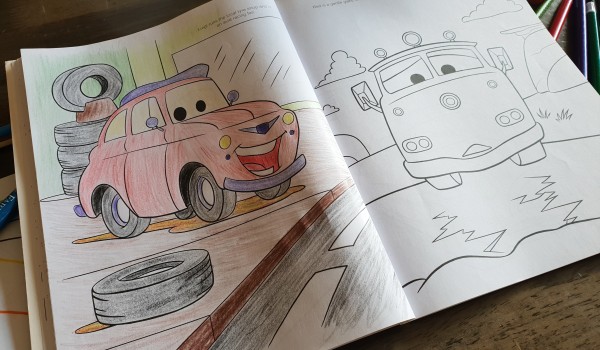By Jennifer Tong
Since the pandemic I have been using wordless picture books, or picture sequences, to teach a mid/high beginner on the phone. Wordless picture books are a sequence of pictures (say 15-25) that tell a story without words. Our lessons consist of telling the story in these books in English. We have found it enjoyable, rich and conducive to learning.
“A picture is worth a thousand words.” One picture can be full of details that lend themselves to descriptions (especially if the pictures are coloured); the actions can be potent with meaning and one’s imagination can be engaged. If we put the pictures together to form a story, the messages can be rich and what exactly happens in the story is up for further discussion. Because there are no words, the student’s focus is on the meaning, and the pictures provide something common for us to talk about. They form lots of ‘comprehensible input’ which is important if the student is listening to us tell the story. Unlike many “ESL action pictures” that we find on the web that are single pictures with different people engaging in different actions in one scene, a story provides interest, cohesion and is closer to real life. The wordless picture books are a rich source of vocabulary, common expressions, and formation of different grammatical structures. They are not too easy to find; a rich resource of many such books can be found here (please request access via the link). If you want to have a list of published wordless book titles with annotations, feel free to contact me at jennifercheeyee@gmail.com. As well, many children’s books and children’s picture Bibles are also suitable; you may want to browse the children’s section in bookstores for ideas.
This is the procedure I follow when I work with this beginning student: I send her the pictures via WhatsApp before the lesson. During the lesson, I first ask her to tell the story using the picture in her first language (which we share), so that she has a sense of the whole story and so that I know how she ‘reads’ the story and what she wants to express. Then I ask her to start telling the story from picture one using English. She necessarily stumbles and tries to find the words and form the sentences. I offer help, and together we construct what she is trying to say. Sometimes I alert her to things in the picture she didn’t notice. And sometimes we have to ‘resort to’ translation (again, I speak her language) but I think that’s kept to a minimum because the picture provides the meaning and we don’t always need translation to communicate. In the process I write down the new words on WhatsApp. At the end of the lesson I will send her the list of words and a recording of their pronunciation. We go through a series of pictures in this way until we feel that the amount is enough for the day. After the lesson she would write up the sentences for the story and send them to me to ‘correct’. We repeat what we’ve gone through the following lessons and she becomes more fluent.
I am thinking about how best to utilize this approach and material. There are more possibilities I haven’t tried. For example, I may in the future record the whole story for her, so that she can listen to my speaking after she has given it a go. We may try to negotiate the meanings of the pictures more in English. Often this negotiation of meaning creates natural interactions. As well, we can exploit the pictures more by talking more deeply about motives, emotions, reasons etc. In this way more complex expressions will be required and she can progress to the next level.
I highly recommend this approach of teaching beginners. It is fun and rich; and is effective. It is best carried out one on one, and is workable even using just the phone during Covid. Give it a try!

